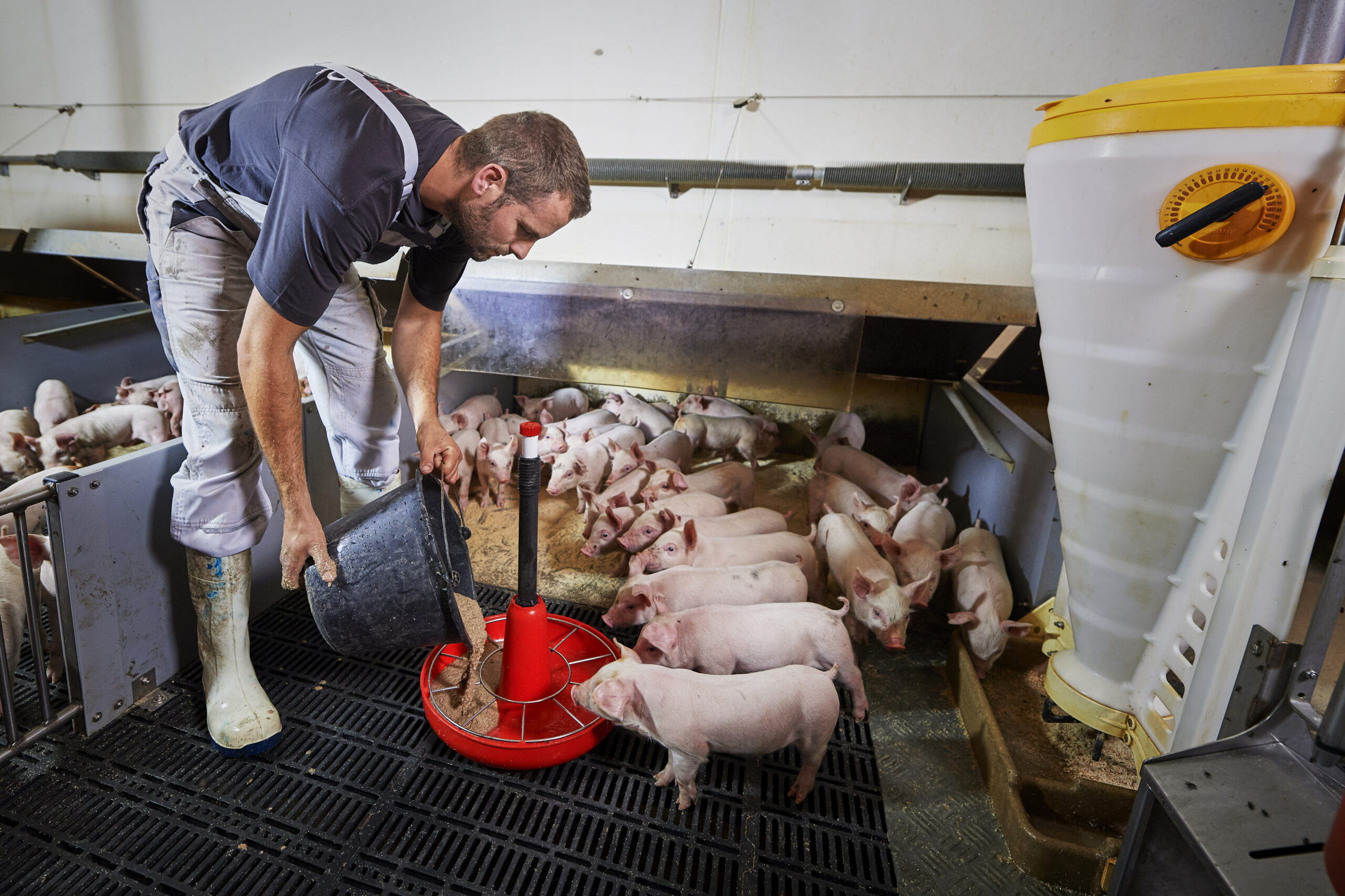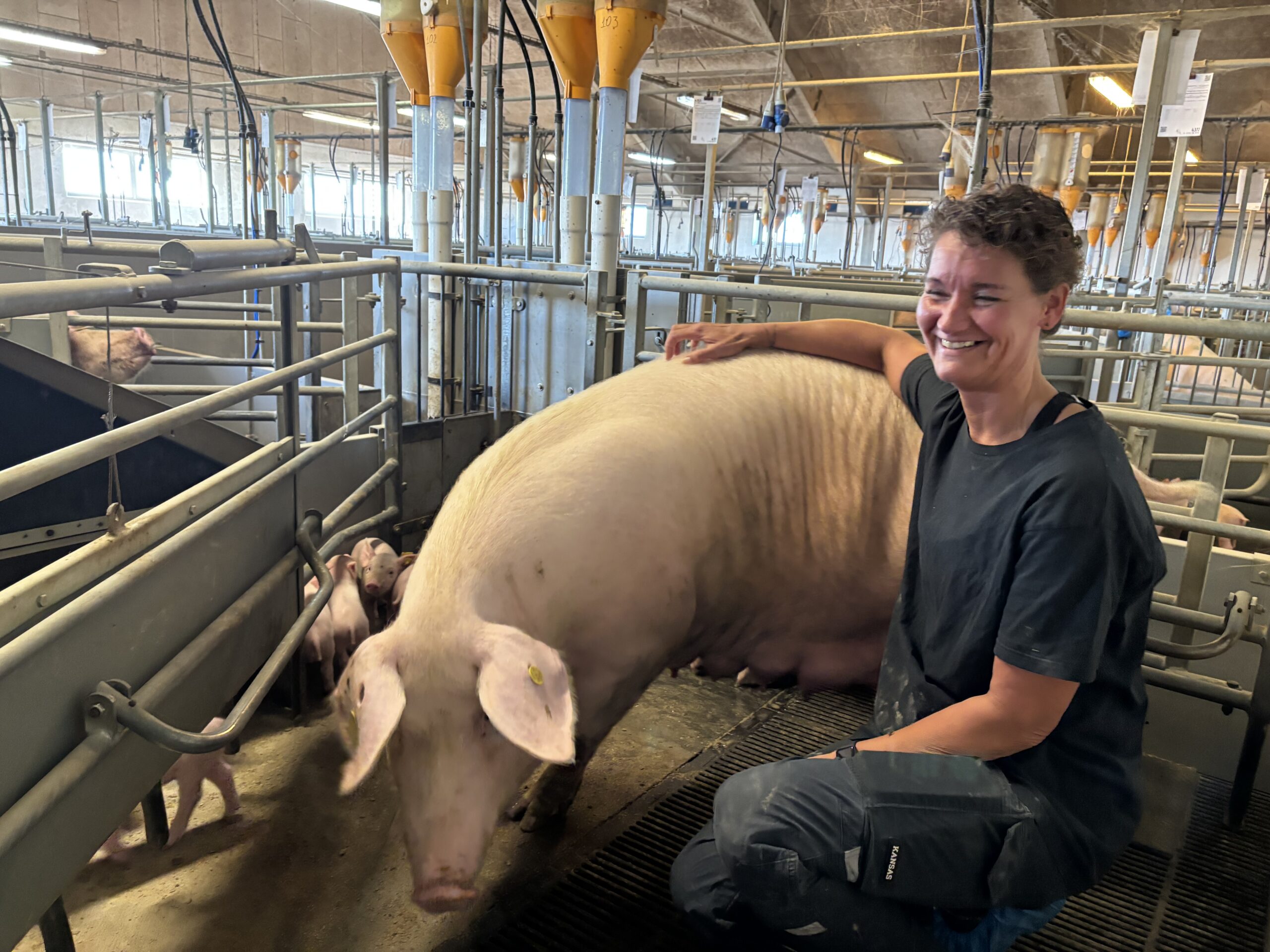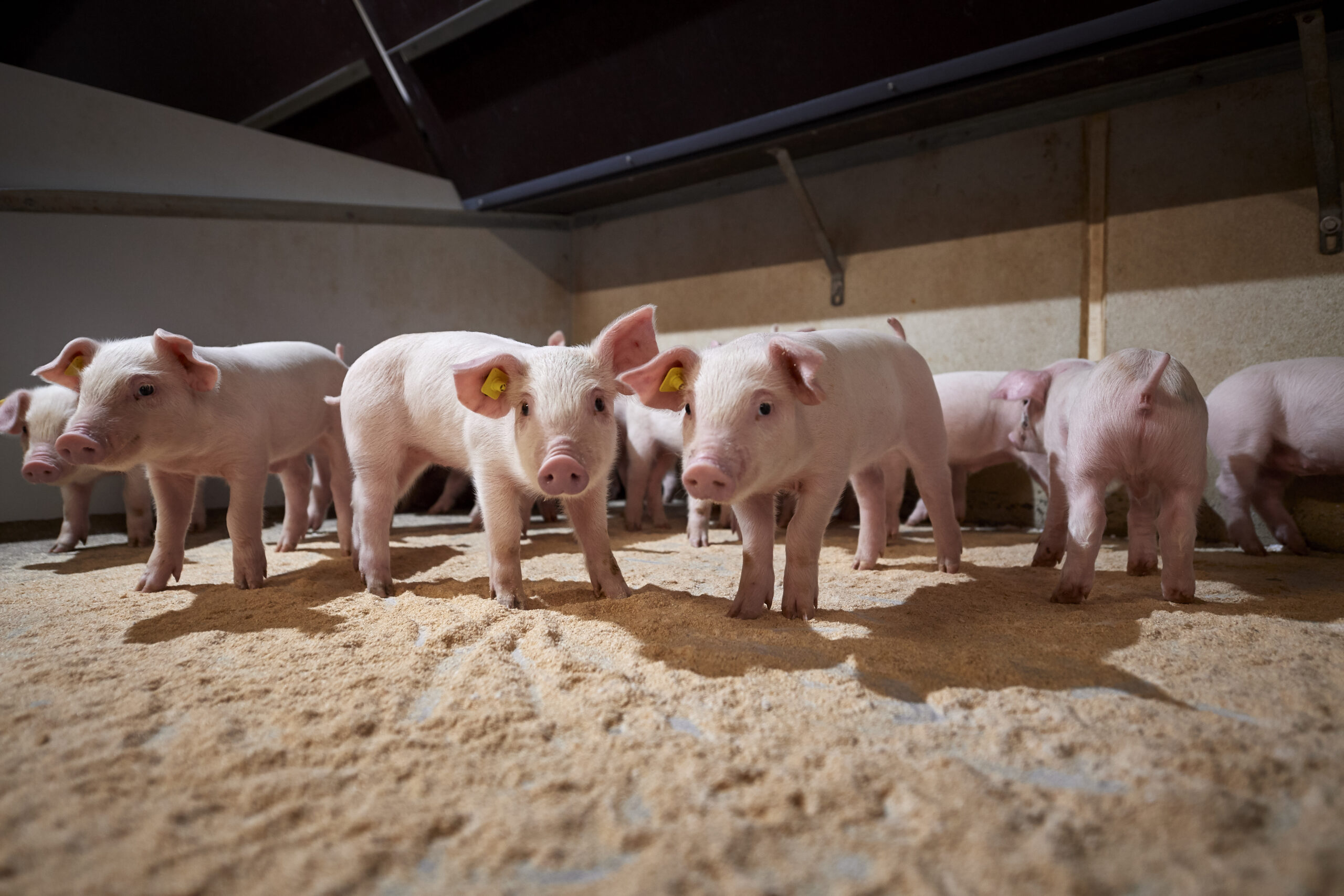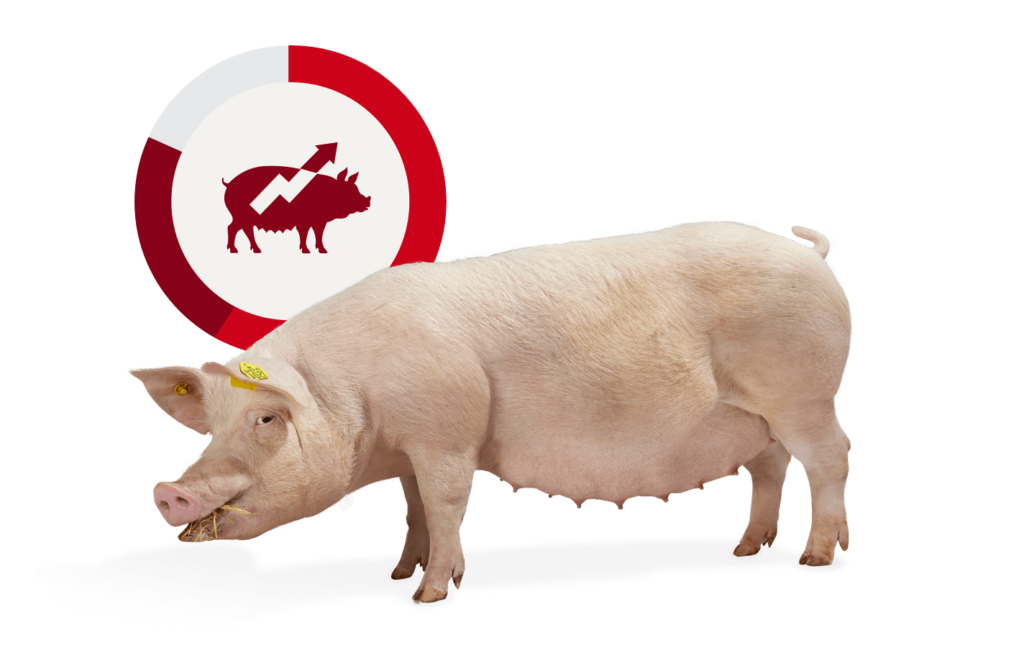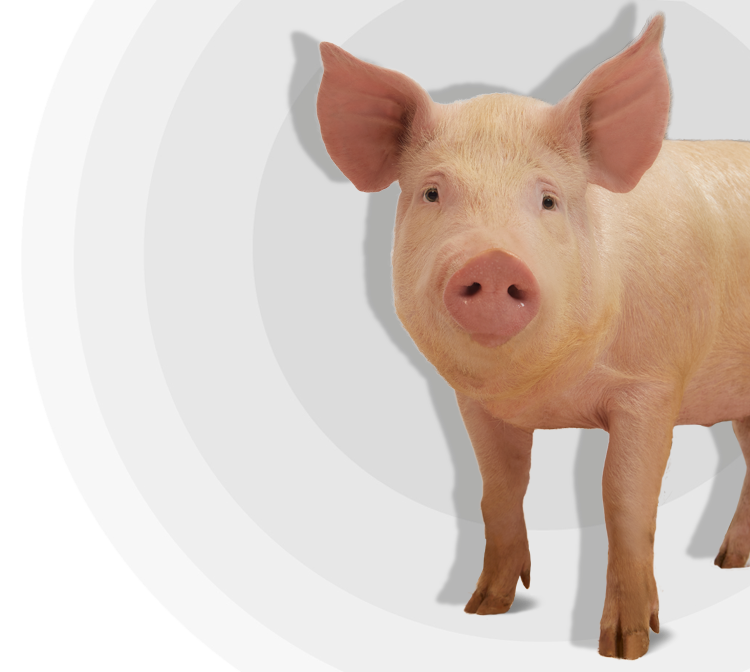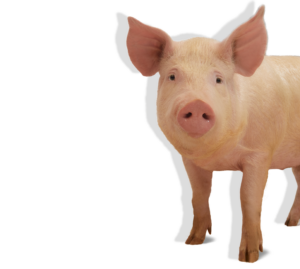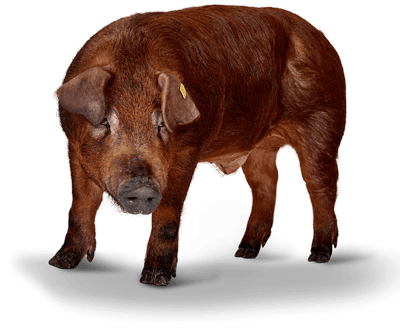Written by Gunner Sørensen, Senior Specialist, SEGES Danish Pig Research Centre, [email protected]
Abstract
Feed composition and feed strategy in the gestation period are crucial factors to achieve a high performing lactating sow with a satisfying longevity. A backfat thickness at farrowing of 16 – 19 mm is the goal for the feeding, but it´s also at a challenge to obtain this aim in loose housing systems, warm climate and with modern genetics.
As a guideline, the first 4 weeks after insemination is the period to regulate the backfat after the previously lactation – skinny sows must be feed close to ad libitum and fat sows must have maximum of 2.5 kg a day. It´s important that the daily feed curve for the gilt never is higher than 2.3 – 2.5 kg in this period, because then there will be a reduction in the littersize. For the next 8 weeks, the sows must never be fed below maintenance – a minimum daily feed intake of 2.3 kg is recommended. If the sows are fed below maintenace in this period, it will have a negative impact on the variation in the birth weigth of the litter. In the last 4 weeks before farrowing, the feed curve must be increased to meet the need for nutrients for litter growth.
The protein level in the gestation diet must be around 90 g digestible protein per kg, and the lysine level around 4.0 g digestible protein per kg. A daily supply of 500 g crude fibre from the diet is the recommendation.
It is also important to focus on the size of the particles in the diet – never have more the 50 % lower than 1 mm, as it will have a negative impact on ulcers and gut health. When using pelleted feed, it is recommended to add 10 – 20 % non-heat treated rolled barley to the pellets.
Keywords: Backfat, feeding curve, gestation, protein and amino acids.
Introduction
Getting uniform sows with the right body condition starts in the previous lactation period. The sows should be fed in order to avoid excessive nutrient mobilisation during the lactation period [1]. Reestablishment of backfat costs the sow energy, and is thus energy inefficient requires additional nutrients. Danish research has shown that giving the sows 1 kg extra feed during lactation may prevent the loss of approximately 0.5 kg during lactation [2]. Keeping the sow weight loss during lactation in the interval 5 -15 kg is a prerequisite for the optimal reproduction performance in subsequent parities. Excessive weight loss has been shown to affect the weaning-to-oestrus interval, ovulation rate and hence, litter size negatively [3,4] Recent trials and evaluations carried out at SEGES Danish Pig Research Centre has caused changes in the recommendations for daily feed allowances and concentrations of dietary protein and amino acids for gestating DanBred Hybrid sows [5]. The aim of this article is briefly to describe the latest research and how this supports productivity, longevity and subsequent reproduction.
Research results and recommendations
The daily protein and amino acid supply during the gestation period is of great importance for the daily growth of the sow – both of muscle and of fat. If the sow is undersupplied with protein and amino acids, growth will decrease, and the degree of fat will increase. This is highly desirable, because modern sows have a high genetic potential for lean growth. If the sows are fed with a diet containing too much protein and amino acids, the result will be a large lean sow at farrowing. This is not appropriate for a successful lactation period with a large milk production and a low weight loss.
Increasing lysine and protein concentrations does not affect birth weight
An increase in the daily protein supply by 13 % and the daily lysine supply by 60 % during the gestation period had no effect on the number of piglets born, the number of stillborn piglets, the weight of the litter at birth or the piglets’ ability to survive [6] as can be seen in the table below.
Table 1: Effect of Digestible Lysine inclusion levels on litter performance [6].

Rapid re-establishment of weight loss after service
The effect of high feeding levels during the first 4 weeks after mating have been discussed in many papers. We know that that aggressive behaviour between sows in the critical 4 weeks after mating is possible and it is not beneficial for reproductive results. One way to reduce aggressive behaviour is to increase the daily feed intake. A major trial has shown that sows can be fed semi ad libitum for the first 4 weeks after insemination without a negative impact on the subsequent litter size or farrowing percentage [8]. Therefore, there is no risk in feeding sows with large weight losses during the lactation period, semi ad libitum after insemination to restore the body condition quickly.
The right feed allowance in late gestation versus overfeeding
Feed intake has an impact on the birth weight of the litter and here the question is what is the right feed level for at sow in normal condition the last 4 weeks? Data from a large Danish trial, where normal sows are feed 2.5, 3.5 or 4.5 kg a day showed that the right level is 3.5 kg a day [7]. The trial also showed that the impact on birth weight is very small – only 20 – 30 g per piglet.
Revised nutrient recommendations for gestating sows
Based on the literature review [4] and a documentation trail [5] – showing absolutely no effect of over supply of nutrients in the gestation period- the following protein and amino acid content is recommended in feed for pregnant sows by SEGES Danish Pig Research Centre.
The Nutrient Standards specific for DanBred genetics can be found here.
Reference List
[1] Bruun, T.S. (2020): Applied feeding of lactating hyper-prolific sows. Article, Danbred
[2] Bruun, T.S.; (2020) Publication no. 1201, Effekt af hurtigt stigende foderkurve eller supplerende sojaskrå til diegivende søer, SEGES Danish Pig Research Centre
[3] Clowes, E.J.; Aherne, F.X.; Foxcroft, G.R.; Baracos, V.E. (2003): Selective protein loss in lactating sows is associated with reduced litter growth and ovarian function. Journal of Animal Science. 81:753-764.
[4] Zak, L.J.; Cosgrove, J.R.; Aherne, F.X.; Foxcroft, G.R. (1997): Pattern of feed intake and associated metabolic and endocrine changes differentially affect postweaning fertility in primiparous lactating sows. Journal of Animal Science. 75:208-216.
[5] Tybirk, P. (2019): Baggrund for aminosyrenormer til drægtige søer, store polte og løbeafdeling. Notat no. 1923. SEGES Danish Pig Research Centre.
[6] Sørensen, G. (2018): Ekstra foder, fibre og protein øger ikke fødselsvægten eller pattegriseoverlevelsen. Publication no. 1158. SEGES Danish Pig Research Centre.
[7] Sørensen, G. (2012): Ekstra foder til drægtige søer i fire uger før faring, Publication no. 956. SEGES Danish Pig Research Centre.
[8] Sørensen, G. (2014): Drægtige gylte og søer skal fodres efter huld de første fire uger efter løbning. Publication no. 1001. SEGES Danish Pig Research Centre.



